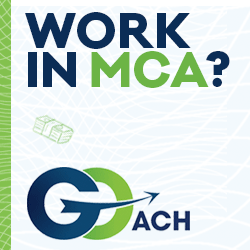Results 1 to 1 of 1
-
01-10-2024, 12:30 PM #1
Equipment financing - Sale Leaseback, Master Credit Line explained...
What is a Master Credit Line (which can be drawn both as Master Finance Account or Master Lease Account)?
Is a contractual agreement between a financial investor (the lessor) and a business (the lessee) that establishes the terms and conditions for multiple financing or leasing transactions (also called schedules). It serves as a framework or template for future financing or leasing arrangements between the two pairs.
The benefits of a Master Credit Line include:
1. Simplified Process: By having a master credit line in place, subsequent financing or leasing transactions can be executed more efficiently and quickly. The parties do not need to negotiate the terms and conditions for each individual transaction, as they are already outlined in the master agreement.
2. Cost Savings: The upfront costs associated with drawing and negotiating individual agreements for each transaction are reduced. The master agreement streamlines the process, resulting in cost savings for both parties.
3. Flexibility: The Master Credit Line agreement provides flexibility in structuring future financing or leasing arrangements. The terms and conditions can be tailored to meet the specific needs of each transaction while all adhering to the overarching framework of the master agreement i.e. Equipment Financing, Collateral loan secured by equipment and/or real estate (Sale leaseback, Equipment Finance Working Capital)
4. Consistency: The use of a master credit line ensures consistency in terms and conditions across multiple financing or leasing transactions. This helps in maintaining uniformity and clarity in contractual obligations, reducing potential disputes or misunderstandings.
5. Relationship Building: A master credit line either structured as finance or lease agreement can foster a long-term relationship between the lessor and lessee. It establishes a framework of trust and understanding, allowing for continued collaboration and future financing or leasing opportunities.
Overall, a master credit line provides efficiency, cost savings, flexibility, consistency, and relationship building benefits for both the lessor and lessee. It is a valuable tool for managing multiple financing or leasing transactions between the parties involved.
What is a Sale-Leaseback transaction?
SLB is a financial transaction where a company sells an asset it owns, such as real estate or equipment, to a buyer and then immediately leases it back from the buyer. This arrangement allows the company to free up capital ed to the asset while retaining the use of it.
• The process typically involves the following steps and documents:
The company, known as the lessee, identifies the asset it owns and wishes to pledge. (The asset must be free and clear*). The SLB is limited to tiled equipment, hard assets and or real estate.
The lessee provides a detailed use of funds i.e. pay off business debts, payroll, paying off taxes etc.
o The lessee provides the following for each asset if EQUIPMENT:
Condition report: Outlining the years, make, model, SN#/VIN#, Mileage/ Hours, any upgrades and or modification that was done on the asset. **
Proof of ownership: If titled; front and Back copy of title***.
Title must be under business name and have no liens showing under lienholder or must be signed off.
For hard asst equipment non-titled;
Paid invoice with proof of payment if available.
Bill of Sale from when equipment was purchased.
Depreciation schedule using the equipment.
Proof of prior insurance coverage on the equipment
Photos of the equipment: photos from all 4 sides, interior exterior, from License plate, Vin or SN tag, Photos from mileage or hours if applicable
o The borrower provides the following for each asset if REAL ESTATE:
Schedule of Real Estate: Outlining the property address, type of property; Primary residence, Vacation home, rental property, commercial property. Year acquired, purchase price, current value, current loan amount, lender etc.
Current Mortgage statement
Rent Roll
Previous appraisal if available
o 3 Months most recent business bank statements
o 2 years most recent business tax returns
o Interim financials
o Business debt schedule
The lessor will evaluate the asset based on their internal desktop appraisal. The normal loan to value for equipment is 2:1 or 50% of wholesale value. However, depending on the asset and the transaction they can go up to 150% LTV on equipment.
Term Sheet will be issued on this Sale-Leaseback standalone or separate schedule as part of a Master Credit Line that was previously proposed and once executed it will be drawn into a separate lease agreement.
What are the benefits of Sale-Leaseback?
SLB transactions offer several benefits for the lessee. By selling the asset, the lessee can generate immediate cash inflow, which can be used to reinvest in the company, pay off debt, or fund other business activities. The lessee also retains the use of the asset, allowing for uninterrupted operations.
The lessor, on the other hand, benefits from the rental income received from the lease agreement. They acquire an income-generating asset without the operational responsibilities or risks associated with ownership.
Sale-leaseback arrangements are commonly used in industries such as construction, manufacturing, and transportation. They provide companies with a way to unlock the value of their assets while maintaining operational control. However, it is important for both parties to carefully consider the terms of the lease agreement, including rent, lease duration, and other contractual obligations, to ensure a mutually beneficial arrangement.
What is the difference between Sale-Leaseback as Capital Lease (EFA Working Capital) with Sale-Leaseback as Operating Lease (True Lease)?
The difference between a sale-leaseback as a capital lease (EFA WC) and a sale-leaseback as an operating lease lies in the accounting treatment and the nature of the lease agreement.
• In a sale-leaseback arrangement as a capital lease:
Accounting Treatment: The sale-leaseback is treated as a financing arrangement. The lessee (the business) records the asset as a liability on their balance sheet, reflecting their ownership rights and obligations. The lessor (the lender) recognizes the asset as a leased asset on their balance sheet.
Ownership Transfer: The ownership of the equipment is transferred from the business to the lender. The business retains the right to use the equipment through the lease agreement.
Risks and Rewards: The lessee assumes most of the risks and benefits of ownership, similar to a loan or purchase. They are responsible for maintenance, insurance, and other costs associated with the equipment.
• In a sale-leaseback arrangement as an operating lease:
Accounting Treatment: The sale-leaseback as an operating lease is treated as an operating expense. The lessee does not record the assets or liability on their balance sheet. The lease payments are recognized as operating expenses over the lease term.
Ownership Transfer: The ownership of the equipment is transferred from the business to the lender. However, the lease agreement is structured as an operating lease, where the business does not assume the risks and benefits of ownership.
Risks and Rewards: The lessor (the lender) assumes the risks and benefits of ownership. They are responsible for maintenance, insurance, and other costs associated with the equipment. The lessee has the right to use the equipment for a specific duration but is not responsible for ownership-related obligations.Steve Benjamin
Professional Business Loans
522 Contessa
Irvine, CA 92620
steveprobiz@gmail.com
https://probizloans.net/
Broker, Underwriter, general business loan expert
949.228.1050
@ 24 hour funding working capital loans
@ Term loans from 3 years to 10 years at 9.5% and up
@ Equipment financing up to 7 years
@ Property loans - Hard Money and traditional - Primary, Investment, commercial, land, fix and flip, construction.
@ SBA loans - 7A and 504.
@ Private money equity and debt for major investments
@ Personal Loans up to gross income from personal tax return.
Similar Threads
-
Equipment Sale Leaseback on Dry Cleaning Equipment?
By Steven_O in forum All Other LendingReplies: 8Last Post: 06-12-2023, 11:44 AM -
Anybody do a sale leaseback of existing equipment
By info@nsslending.com in forum Business LoansReplies: 3Last Post: 02-06-2020, 01:54 PM -
Working Capital Term Loans - Using Equipment as Collateral - Not a sale Leaseback
By michaelh in forum All Other LendingReplies: 0Last Post: 09-10-2019, 07:22 PM -
Equipment Sale Leaseback
By NickHubbard in forum Deal BinReplies: 1Last Post: 03-15-2016, 04:25 PM -
Is your client in need of a Line of Credit, Equipment Financing, or MCA refi?
By Harrymetrix in forum PromotionsReplies: 0Last Post: 08-04-2015, 02:38 PM





 Reply With Quote
Reply With Quote















